17th century
Artworks 91 to 100 of 127:
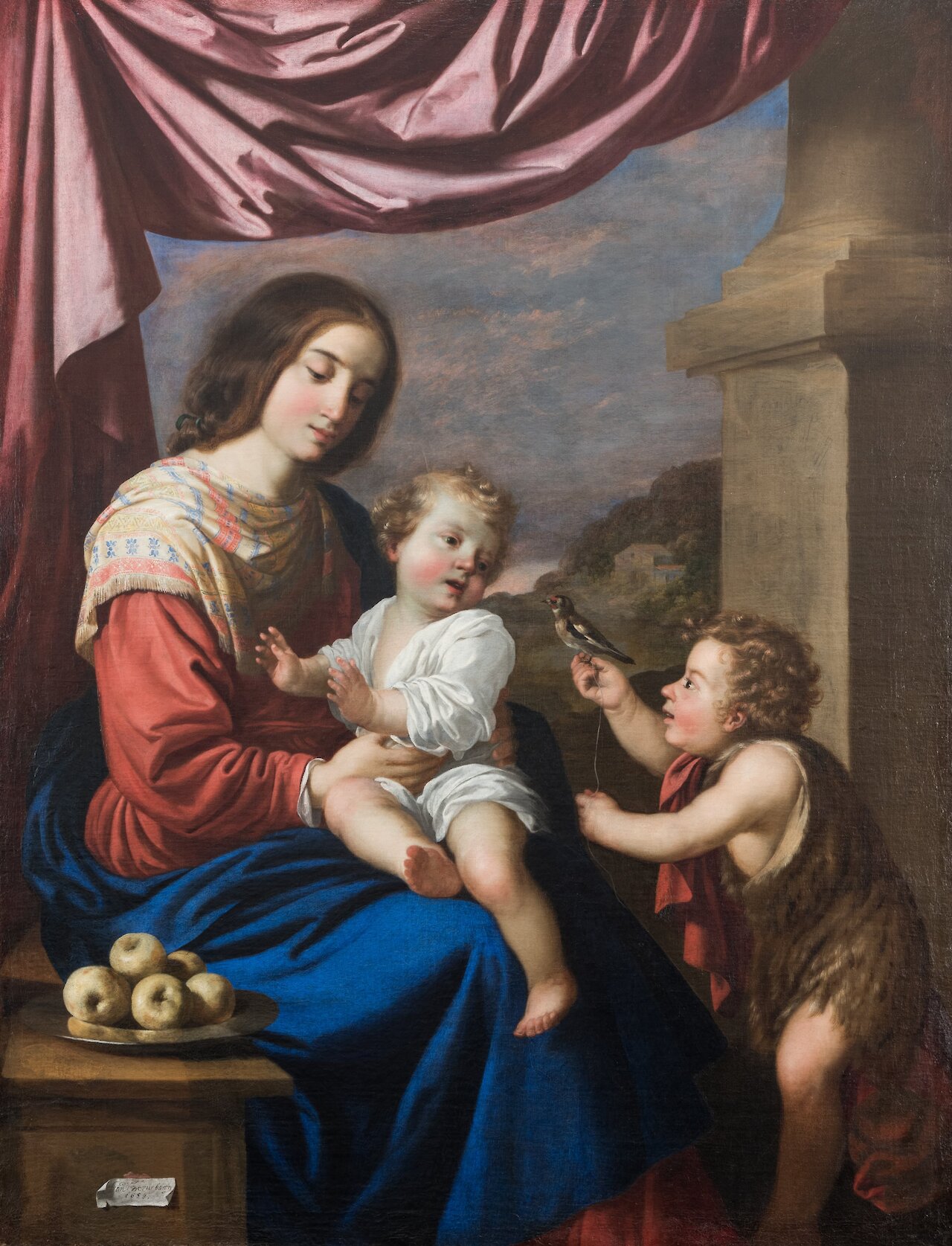
Virgin and Child with Saint John
by Francisco de Zurbarán, 1658
- Medium
- Oil
- Dimensions
- 54 1/2 in x 42 in (138.43 cm x 106.68 cm)
- Location
- San Diego Museum of Art
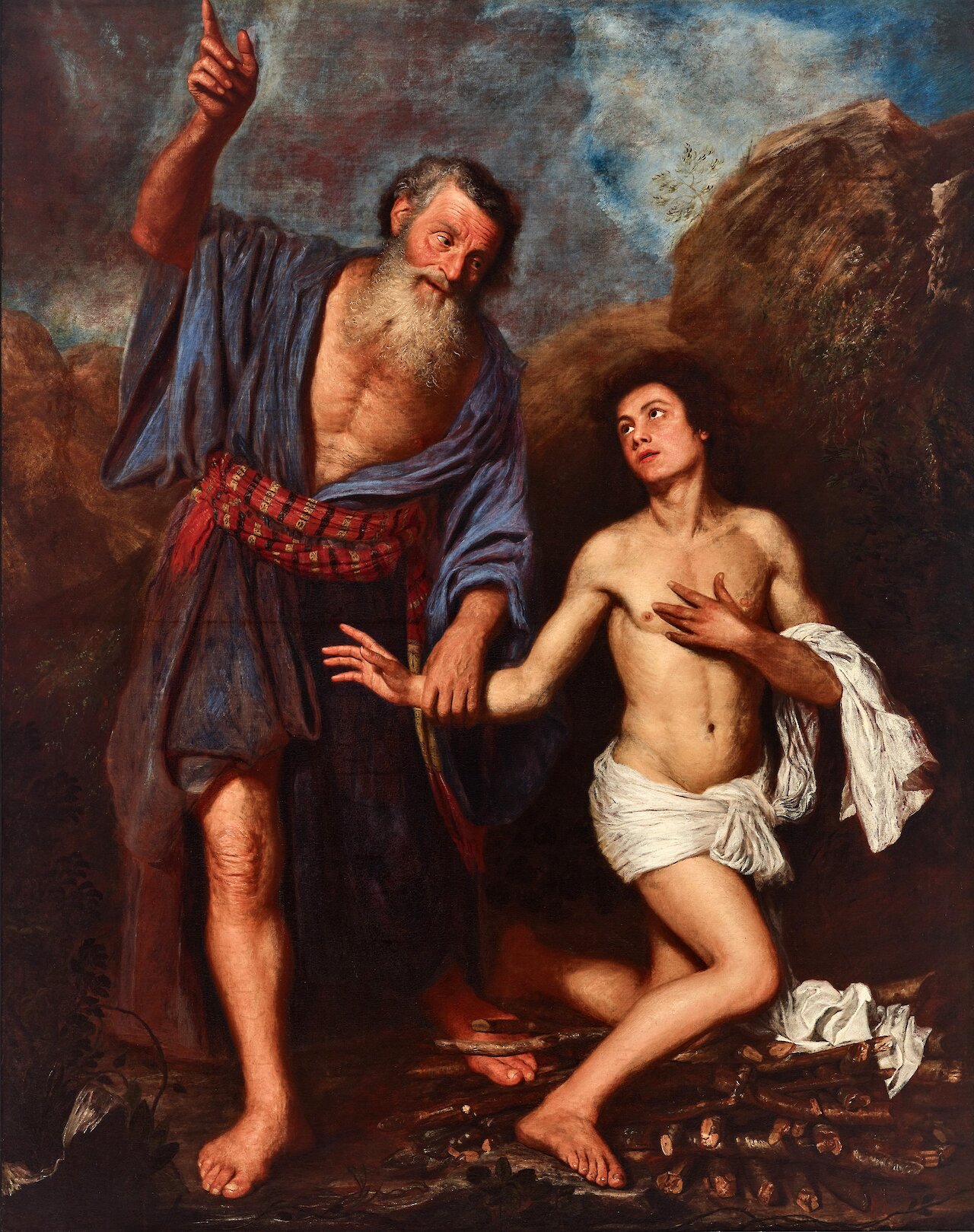
The Sacrifice of Isaac
by Antonio de Pereda y Salgado, circa 1659
- Medium
- Oil on canvas
- Dimensions
- Framed: 96 3/8 × 78 × 4 1/2 in.
- Credits
- Dallas Museum of Art, The Karl and Esther Hoblitzelle Collection, gift of the Hoblitzelle Foundation. Image courtesy Dallas Museum of Art
- Notes
Attributed to: Antonio Pereda y Salgado
- Location
- Dallas Museum of Art
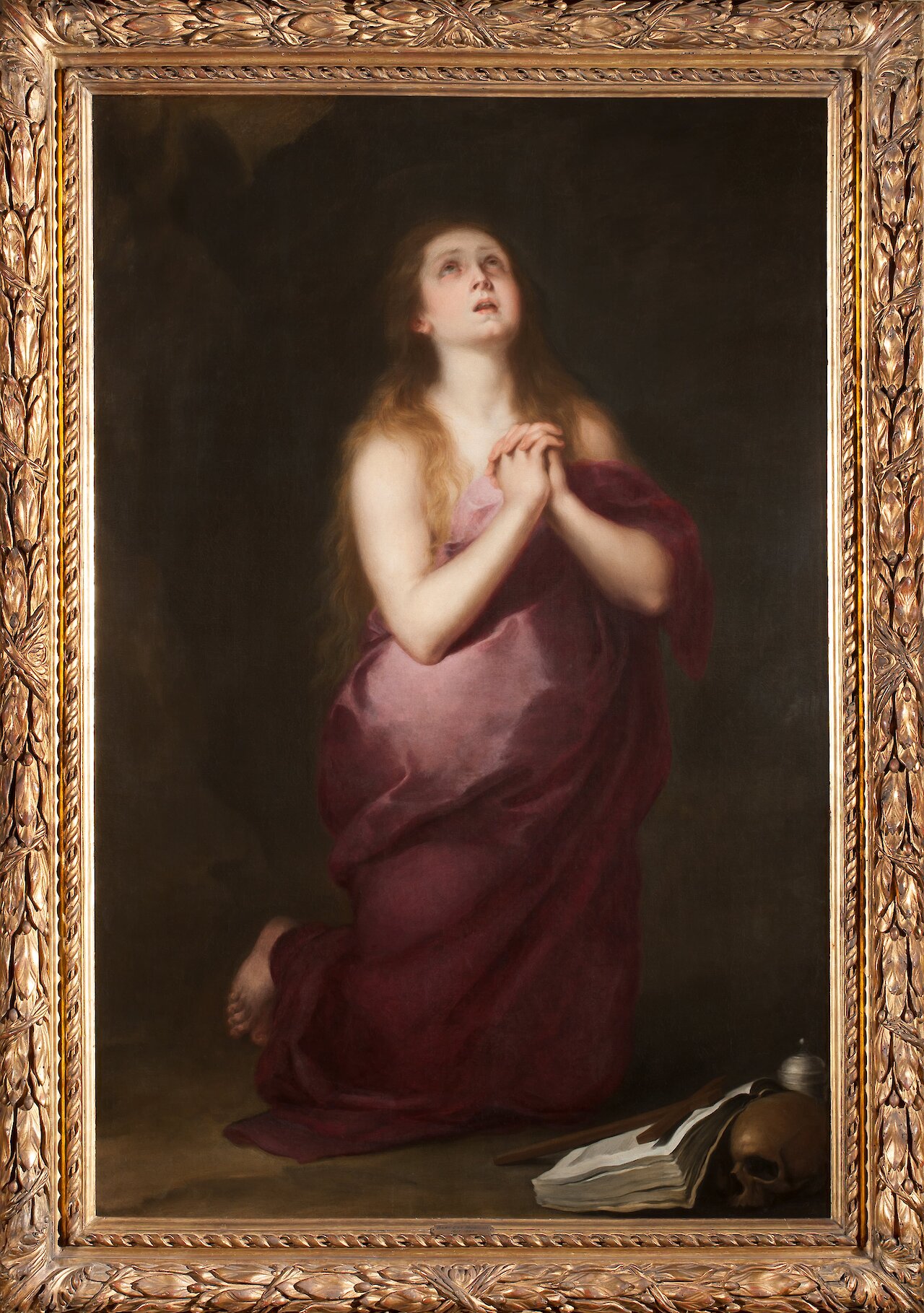
The Penitent Magdalene
by Bartolomé Esteban Murillo, circa 1660–1665
- Medium
- Oil
- Dimensions
- 63 1/4 in x 41 1/2 in (160.66 cm x 105.41 cm)
- Location
- San Diego Museum of Art
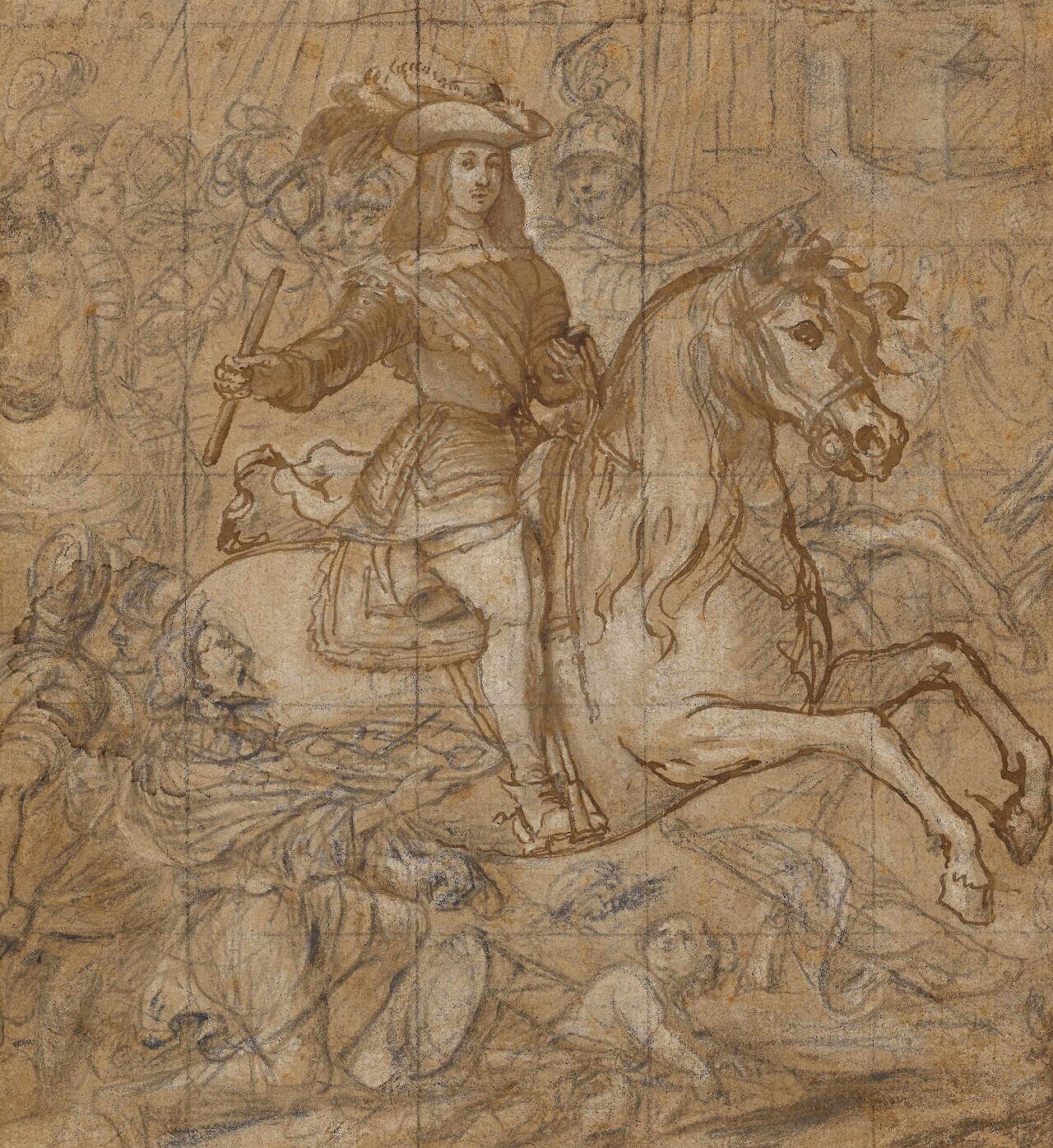
Equestrian Portrait of Don Juan José of Austria
by José Ximénez Donoso, circa 1660–1680
- Medium
- Brown ink and brown wash over black chalk, heightened with white gouache, squared in black chalk (recto); black chalk (verso)
- Dimensions
- 23.2 × 21.3 cm (9 1/8 × 8 3/8 in)
- Notes
A highly successful and ruthless general, Don Juan José of Austria suppressed an anti-Spanish uprising in Naples when he was only eighteen years old. This scene shows his triumphal entry following the suppression of the revolt. A young fisherman had led a protest against a new tax on fruit imposed by the aristocracy; the protest later turned into an insurrection aiming at slaughtering the nobility. As the general leads his cavalry into the city, trampling a child underfoot, he receives the homage of the population in the person of the bearded man kneeling to the left, who offers a platter containing three utensils, perhaps representing the keys of the city.
José Ximénez Donoso copied the equestrian figure from a well-known etching by Jusepe de Ribera but added soldiers and spectators to the background. The artist drew the whole scene in black chalk but reinforced the forms of Don José and his horse, copied from the print, in pen and brown ink. The drawing is squared for transfer, implying that the composition was intended for a painting or perhaps a print.
- Location
- J. Paul Getty Museum
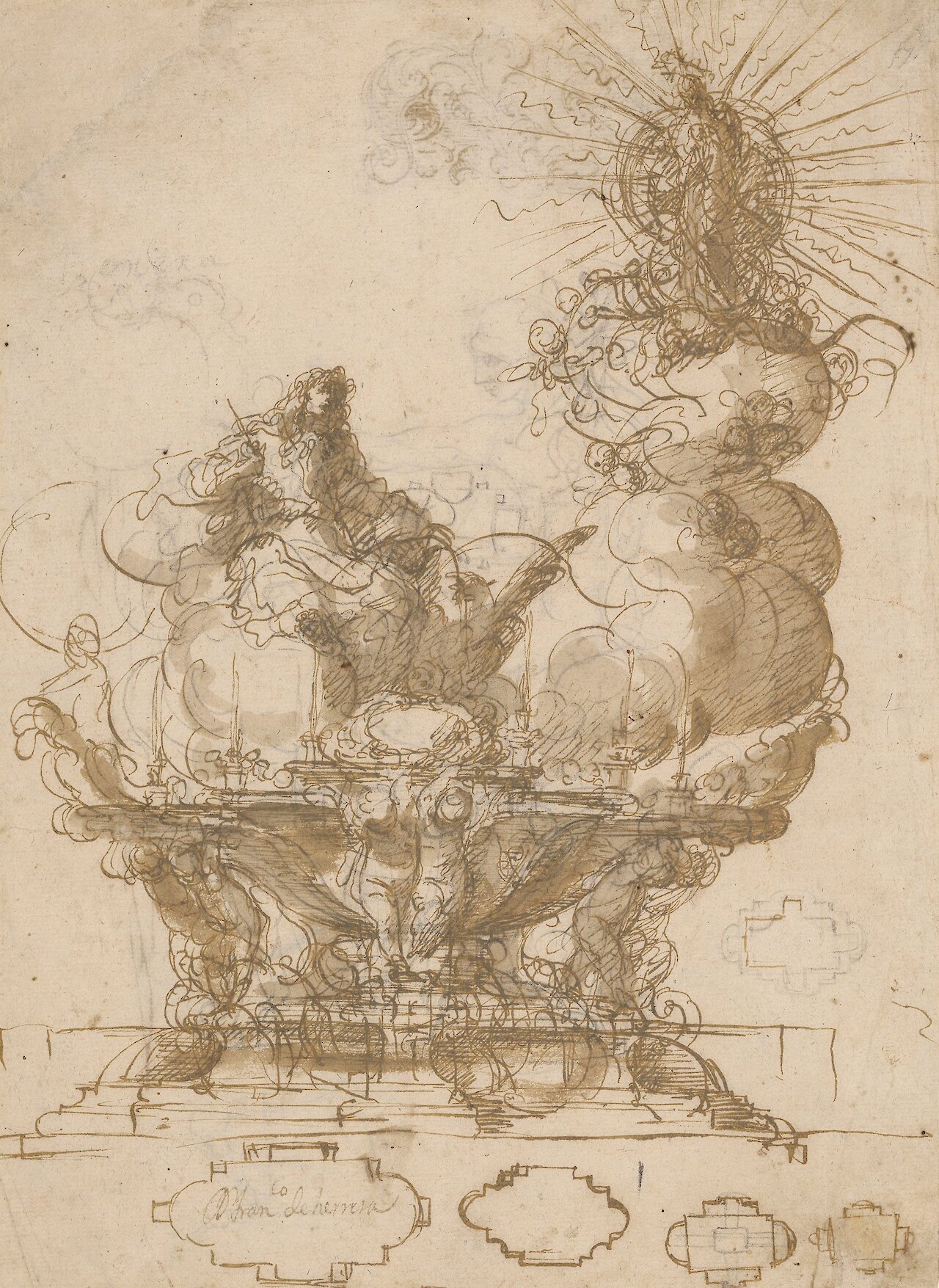
Design for a Processional Sculpture of The Vision of St. John on Patmos, with Five Variant Plans
by Francisco de Herrera el Mozo, circa 1660–1671
- Medium
- Pen and brown ink and wash, over black chalk, on laid paper
- Dimensions
- 10 3/4 x 7 13/16 in.
- Credits
- The Morgan Library & Museum. Purchased as the gift of Walter C. Baker. Photography by Graham S. Haber.
- Location
- Morgan Library & Museum
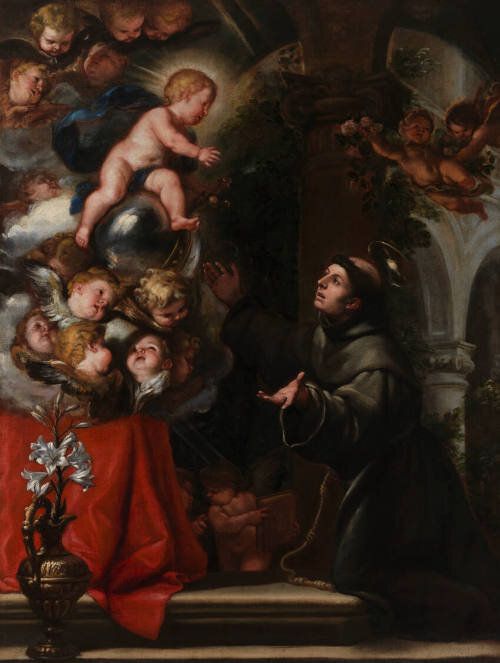
The Vision of Saint Anthony of Padua
by Claudio Coello, 1663
- Medium
- Oil on canvas
- Dimensions
- Image: 67 × 50 1/2 in. Framed: 76 × 59 1/2 × 3 1/2 in.
- Credits
- Gift of Walter P. Chrysler, Jr.
- Location
- Chrysler Museum of Art
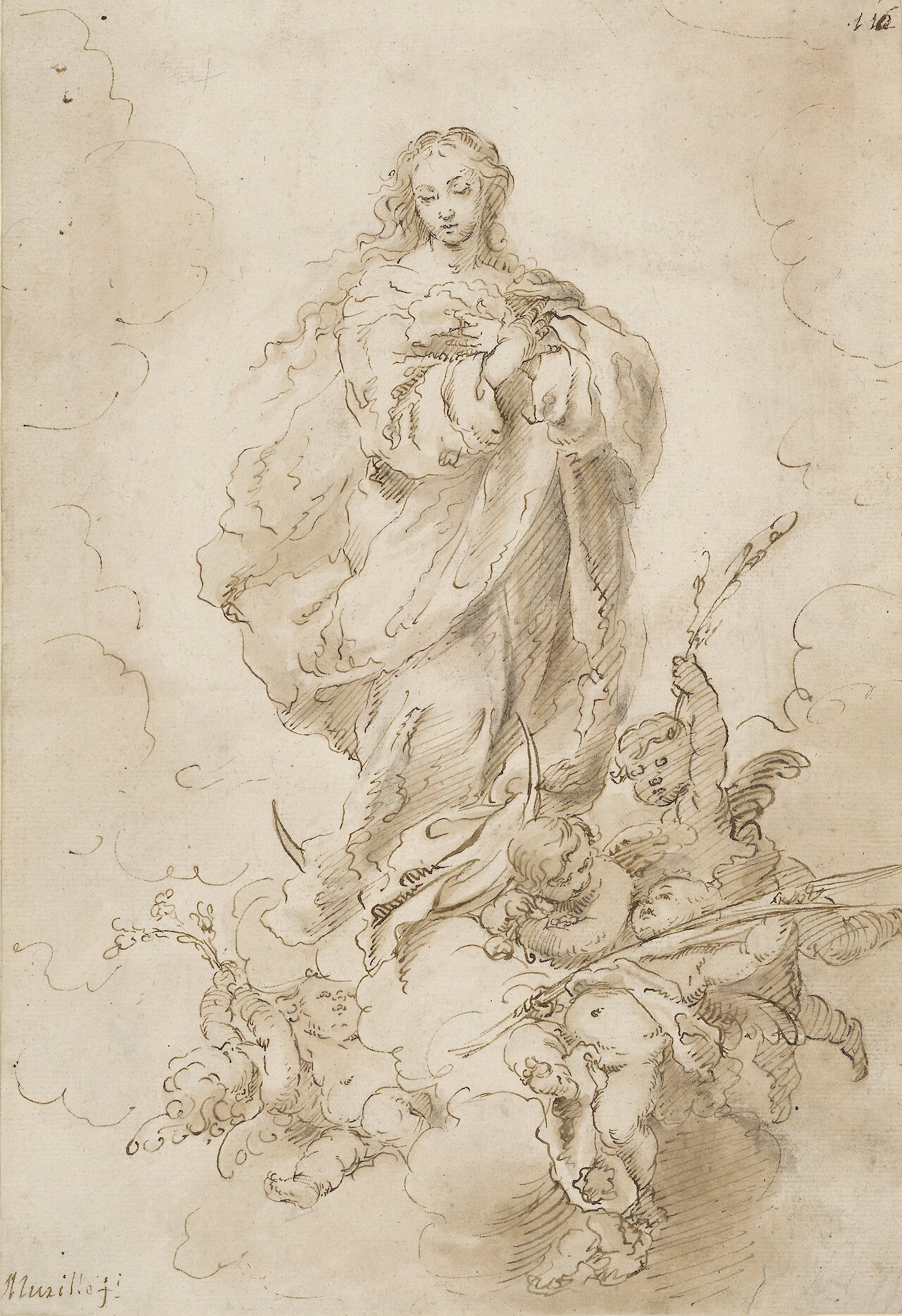
The Immaculate Conception
by Bartolomé Esteban Murillo, circa 1664
- Medium
- Pen and brown ink and wash, over black chalk, on laid paper
- Dimensions
- 13 1/4 x 9 in.
- Credits
- The Morgan Library & Museum. Photography by Graham S. Haber.
- Location
- Morgan Library & Museum
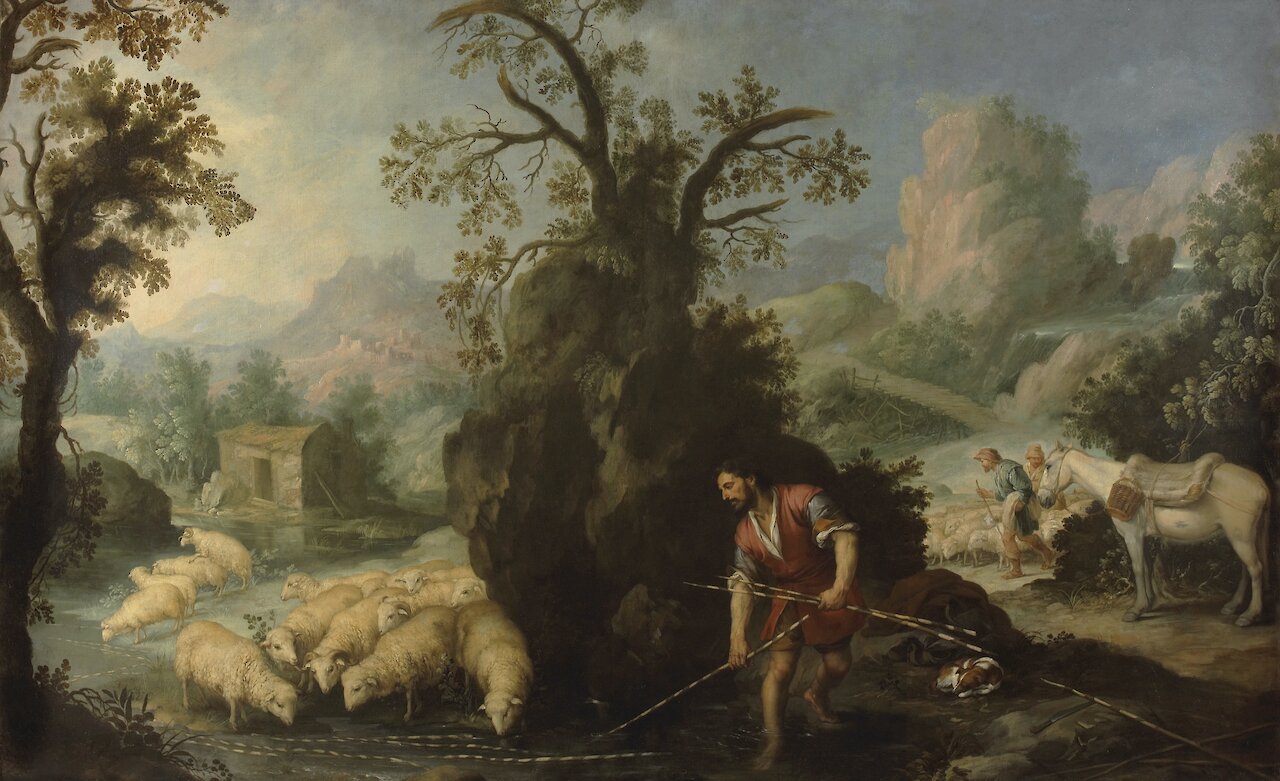
Jacob Laying Peeled Rods before the Flocks of Laban
by Bartolomé Esteban Murillo, circa 1665
- Medium
- Oil on canvas
- Dimensions
- 87 3/4 x 142 in (222.9 x 360.7 cm)
- Credits
- Meadows Museum, SMU, Dallas. Algur H. Meadows Collection, MM.67.27. Photography by Kevin Todora.
- Location
- Meadows Museum
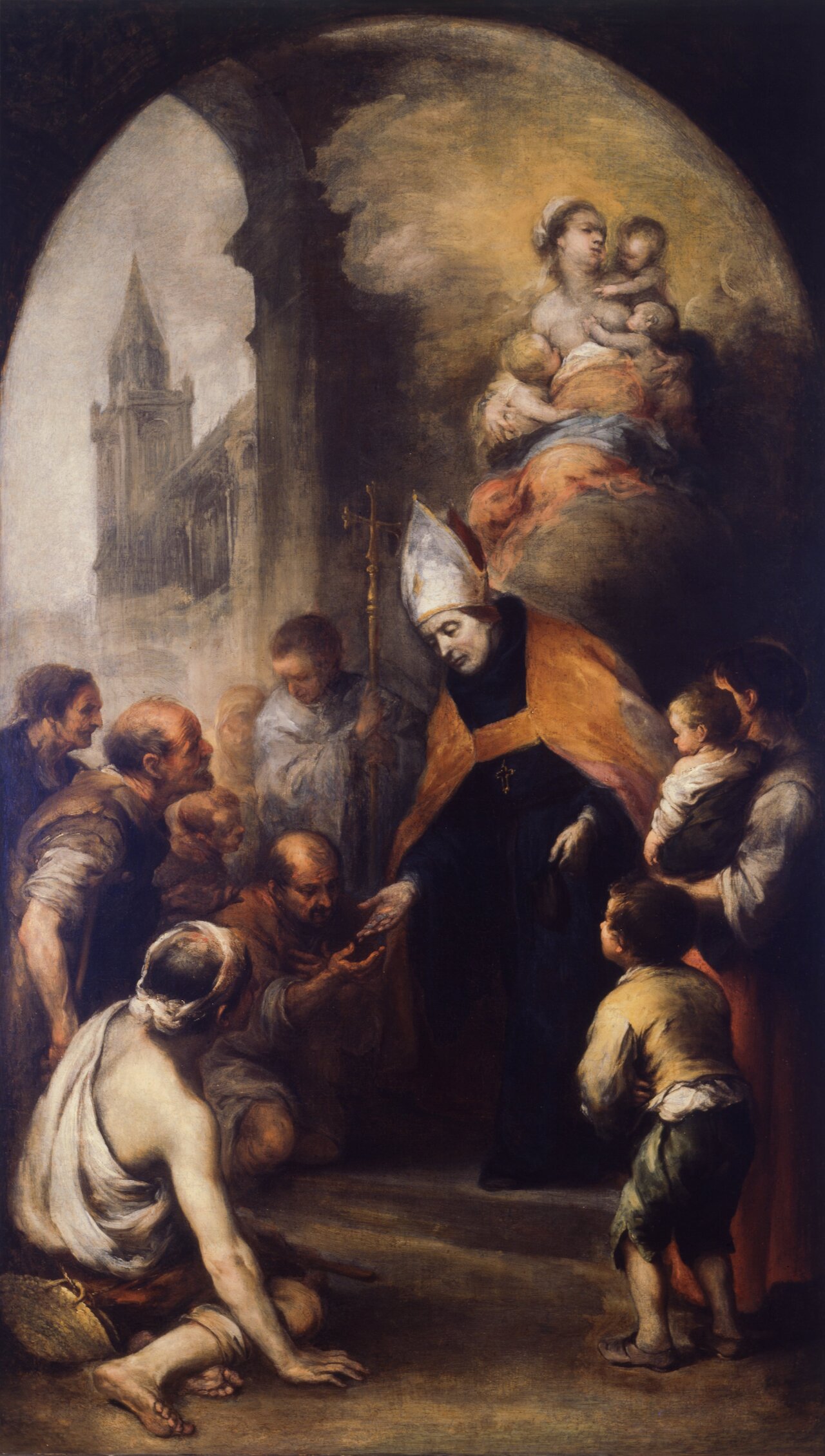
Saint Thomas of Villanueva Giving Alms to the Poor
by Bartolomé Esteban Murillo, 1665–1670
- Medium
- Oil on canvas
- Dimensions
- 52-1/8 x 30 in (132.4 x 76.2 cm)
- Credits
- The Norton Simon Foundation
- Location
- Norton Simon Museum
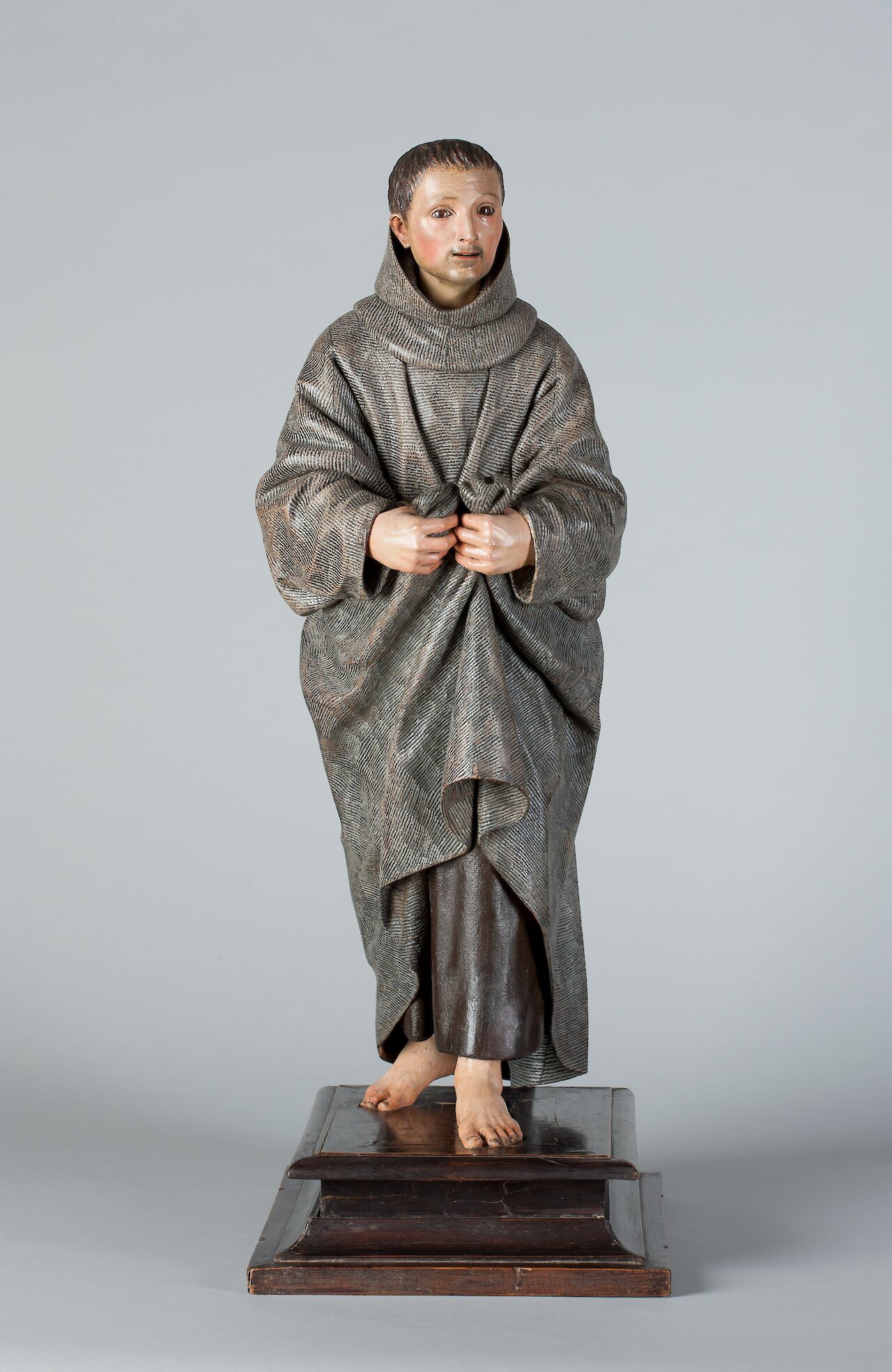
San Diego de Alcalá
by Pedro de Mena, 1665–1670
- Medium
- Polychromed
- Dimensions
- 24 7/32 in x 9 7/16 in x 10 5/8 in (61.5 cm x 24 cm x 27 cm)
- Location
- San Diego Museum of Art